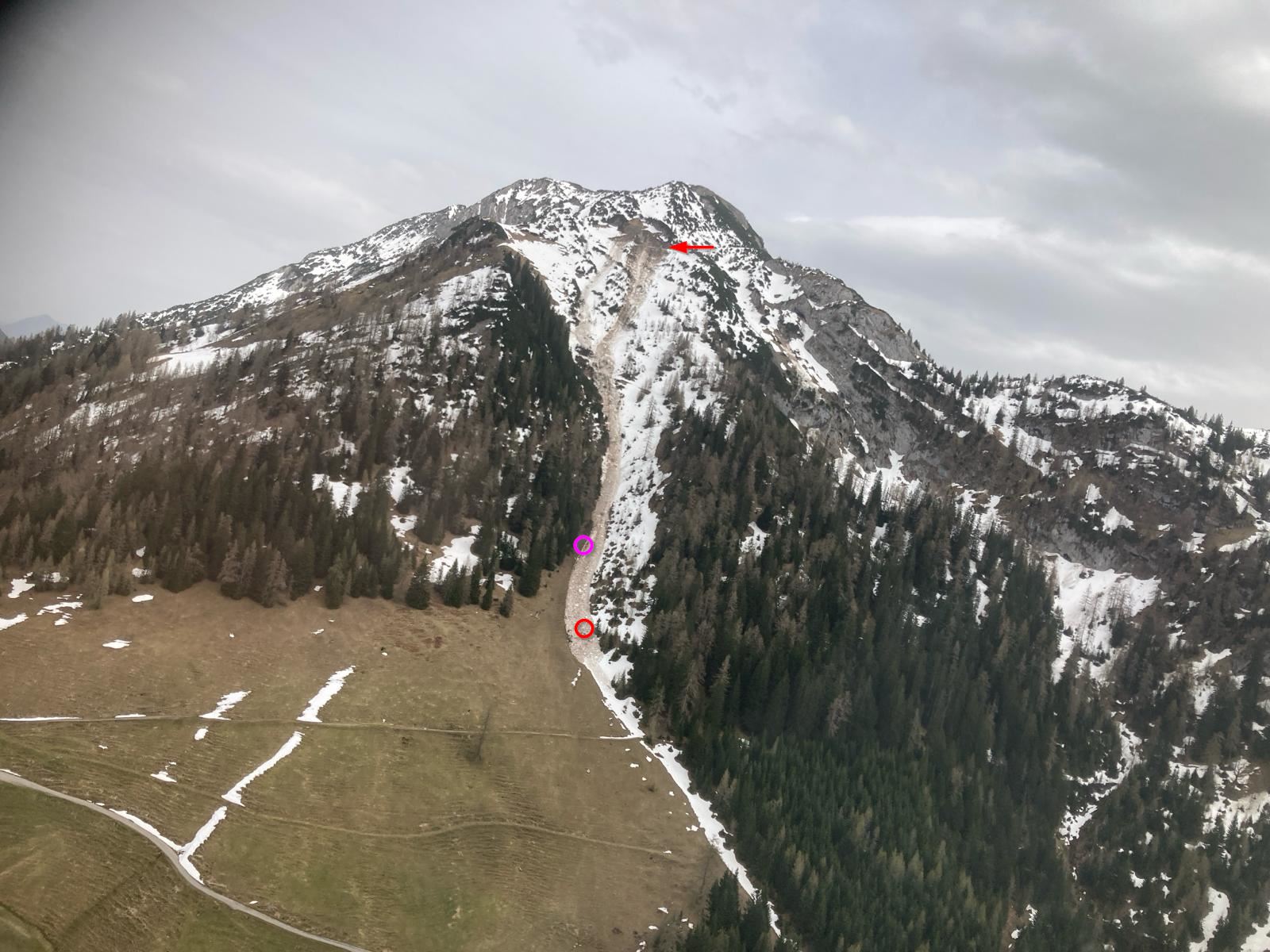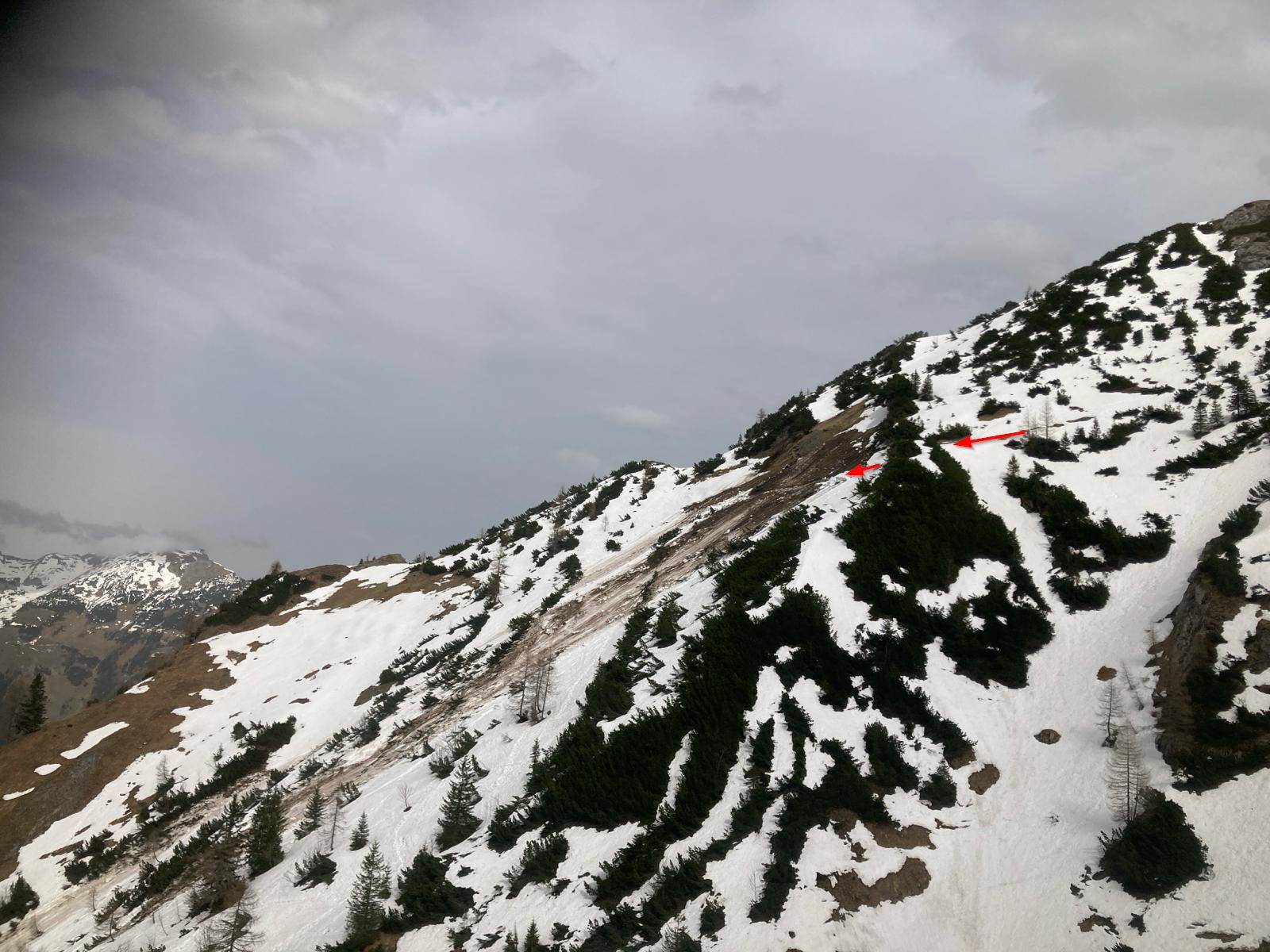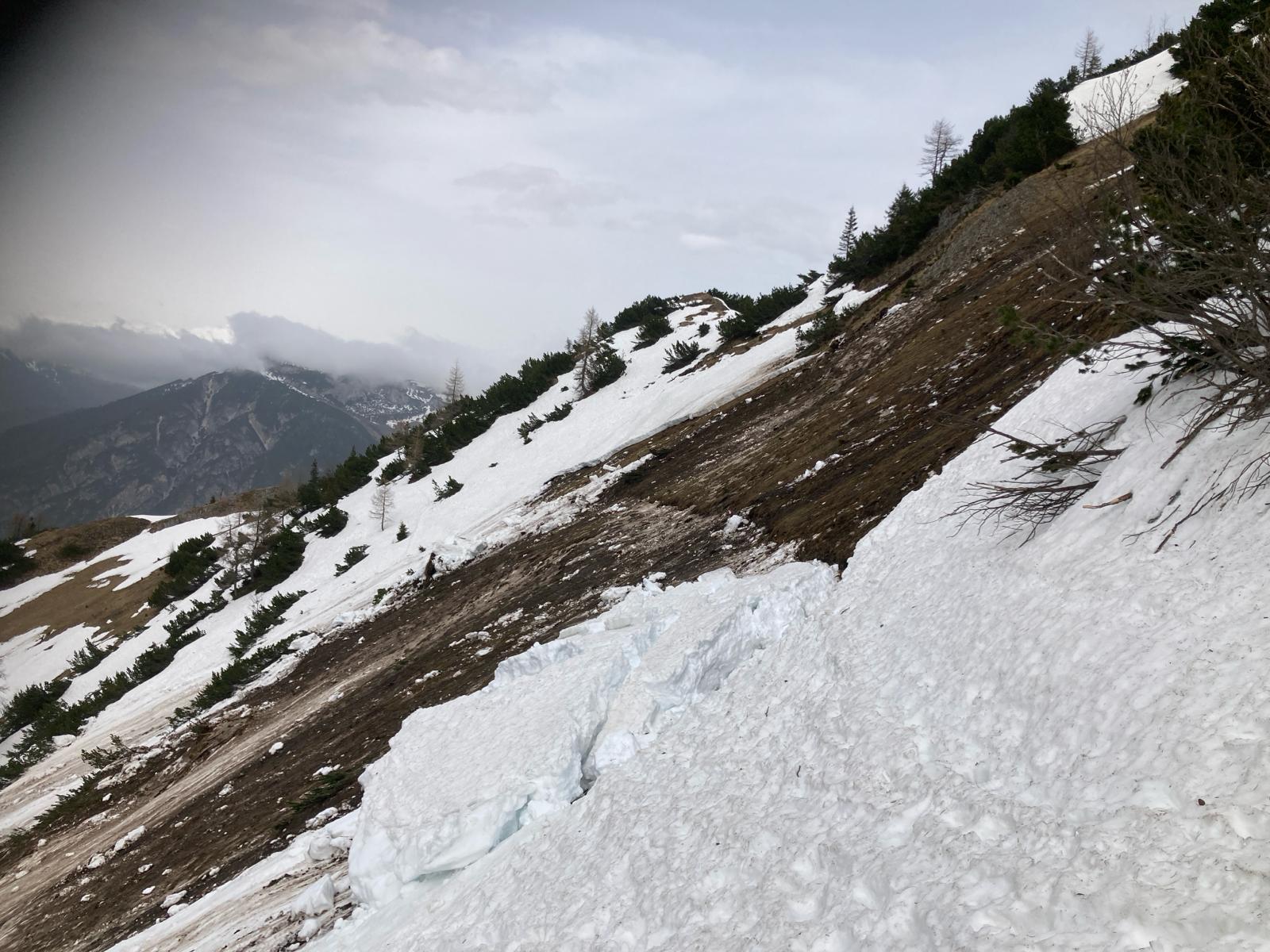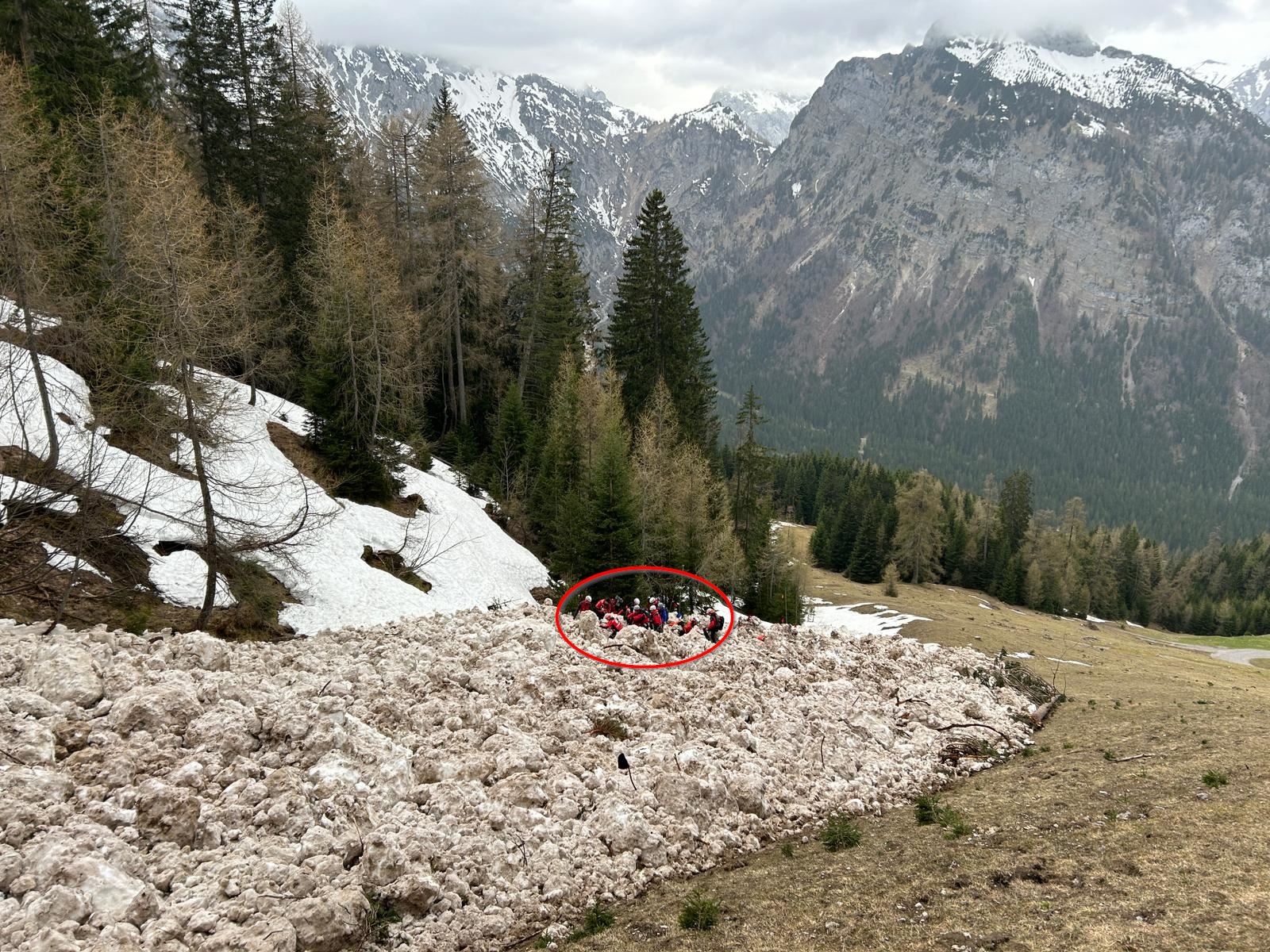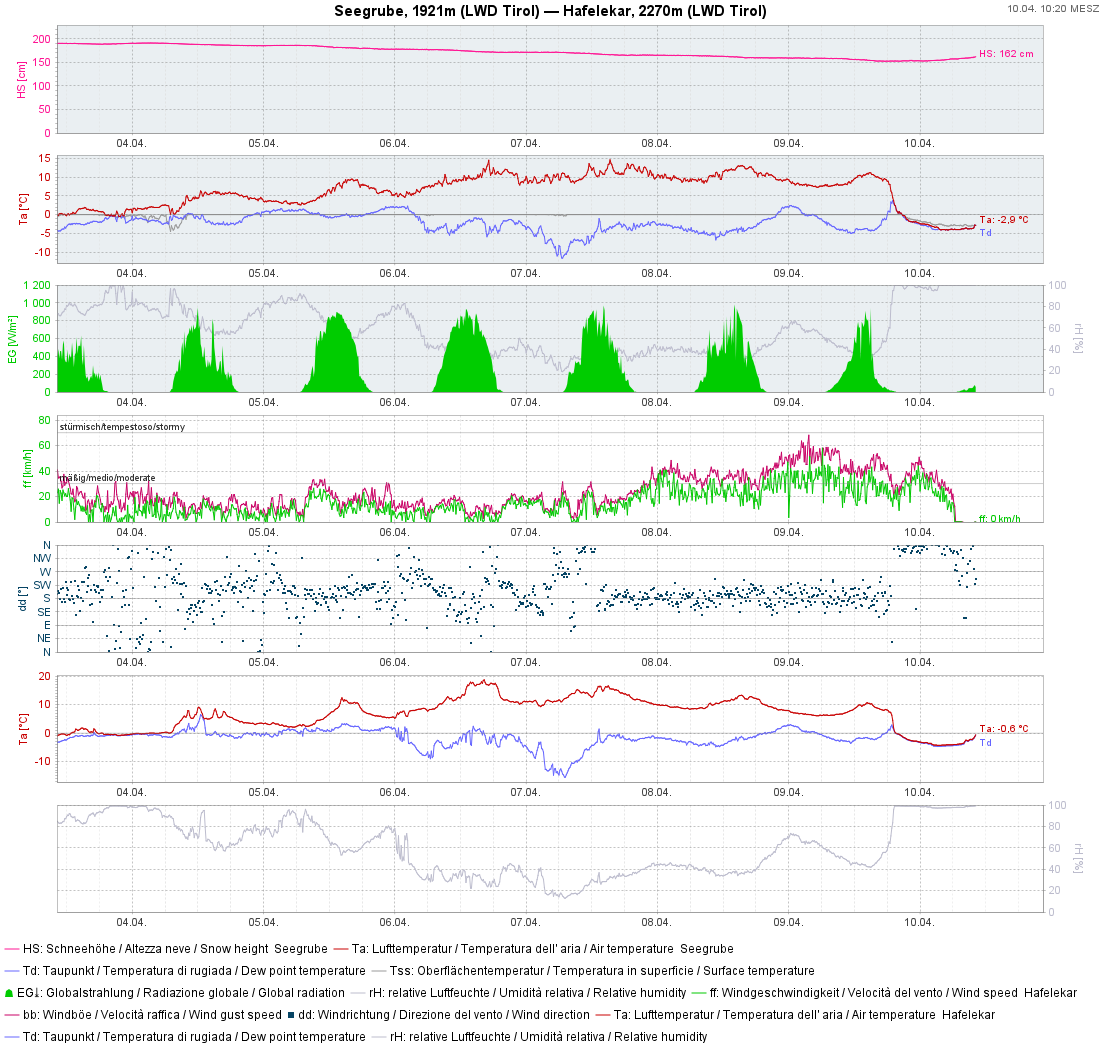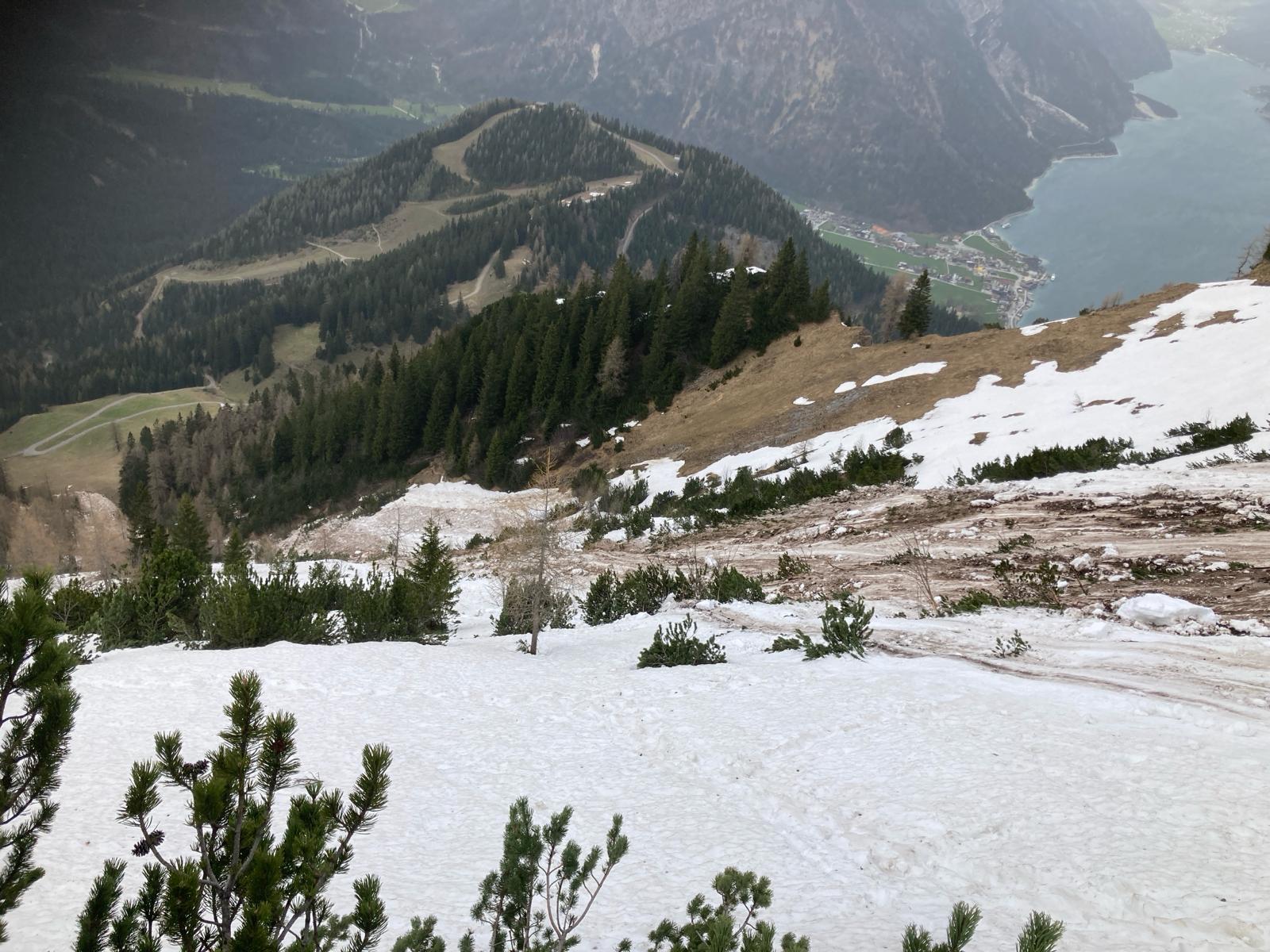On 09.04.2024 a person died below the Bärenkopf in the eastern Karwendel as a result of a naturally triggered glide-snow avalanche.
Sequence of occurrences
A hiking group of seven persons climbed from Pertisau am Achensee over the Lärchenwiese district of town into Weissenbachtal in the direction of Bärenkopf (1991m). Below the Bärenkopf the group decided to forego the summit due to the snow situation, and instead to descend towards Bärenbadalm. As the group traversed a very steep snowfield near the summer trail, the two persons at the head of the group were caught by a naturally triggering glide-snow avalanche and swept along with it. One person came to a stop 250 metres lower down on the orographically right side of the avalanche, suffered light injuries and was flown to the hospital in Schwaz. The second person was completely buried 330 metres lower down beneath one metre of snow. The immediately launched search and rescue operation involved 2 emergency helicopters, the police helicopter, local sections of the mountain rescue squad of Maurach, Achenkirch and Jenbach, 2 mountain rescue avalanche dogs and 3 alpine police officials. The utterly buried person was found about 1 1/2 hours after the avalanche triggered at approximately 4:30 pm by a mountain rescue probing team. The person had perished.
Incident analysis
This was a glide-snow avalanche which glided over a very steep (>35 degrees) grass-covered slope. Glide-snow avalanches always trigger spontaneously. Thus, the persons who traversed the slope were not the cause of the glide-snow avalanche. Due to the unusually warm conditions in the previous days, however, the prerequisites for glide-snow avalanches were heightened at the time of the avalanche release. Lots of water seepage into the snowpack which had been isotherm (0°) for a longer period reinforced the wetness of the snowpack at ground level. This reduced the friction and increased the likelihood of glide-snow avalanches.
As discussed in the last blog, at high altitudes there is still a snowpack of above average thickness. At the same time, at low and intermediate altitudes there is little or no snow on the ground. The route of the hikers led initially over a trail which was bare of snow, or with very little snow on the ground, through wintery terrain. Avalanches which fracture at high altitudes can plummet all the way down to greenland, as was the case with this avalanche.
